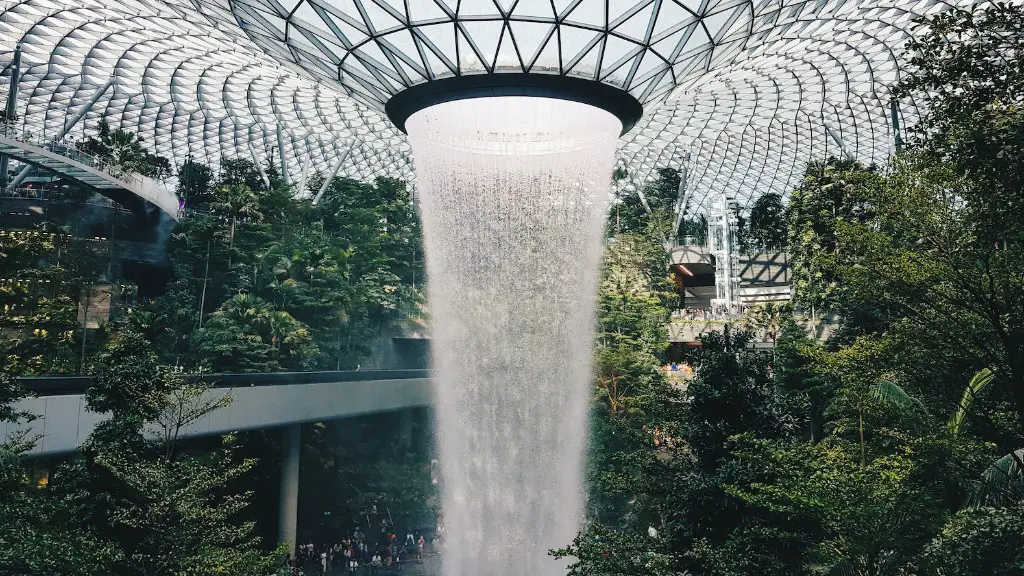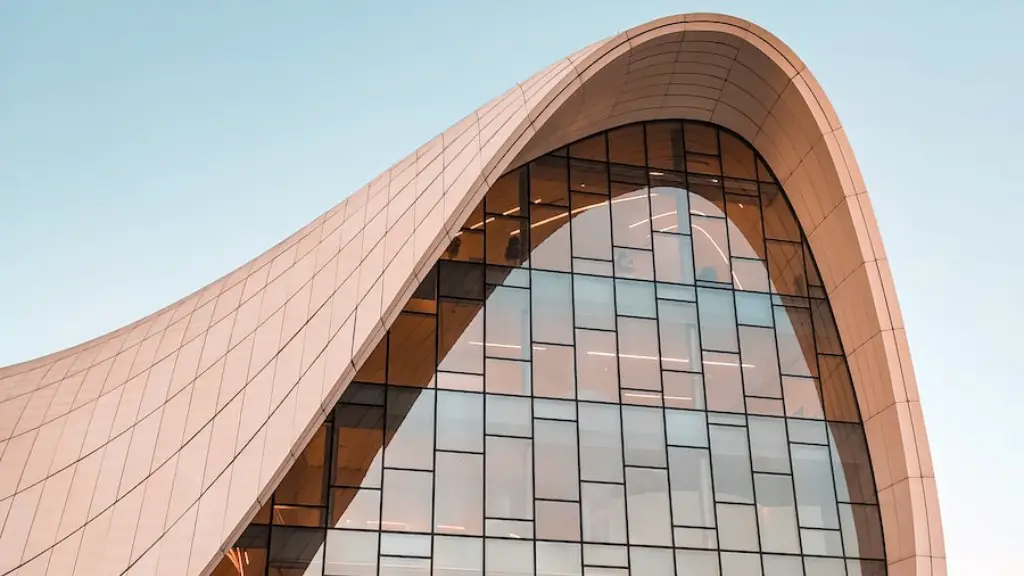Introduction
Romanesque architecture is an artistic form that emerged in Europe during the 11th and 12th centuries, characterized by its semi-circular arched windows and doorways, wall buttresses, and its large stone vaulted ceilings. Romanesque architecture developed in response to the need for larger spaces within churches as religious observance grew in popularity. At the same time, it was used to denote a transition from the more simple, early history of Christianity to the more sophisticated religious establishment that began to emerge in Europe in the 11th century. Today, it is considered one of the most influential forms of European architecture.
Influence of Monks on Romanesque Architecture
The first and most important influence on Romanesque architecture was the presence of monks in the 11th and 12th centuries. Monasteries, churches and cathedrals were created throughout Europe during this time, not only for the purpose of religious observance and ritual, but also as a physical representation of the church’s power and authority. Due to this important symbolism, architects sought to design the most impressive and awe-inspiring churches and cathedrals possible. In response, the monasteries and religious figures of the time began to use their teachings to shape the designs of these new churches, and, in turn, set the foundations for what would become known as the Romanesque style.
Influence of the Cluniac Order
In particular, the Cluniac Order of Benedictine monks was responsible for introducing some of the most prominent features of Romanesque architecture. During this time, the Order had become immensely influential in Europe, and its teachings soon began to shape the architecture of churches throughout the continent. The order was particularly influential for its use of arched apertures, as well as its focus on creating a larger space for religious ceremonies. This was accomplished by the addition of narrower side aisles, wider transepts and a more imposing crossing tower. These features became some of the hallmarks of the Romanesque period, and are commonly seen in Romanesque churches and cathedrals today.
Influence of Pilgrimage and Devotional Practices
In addition to the influence of the Order of Cluniac monks, Romanesque architecture was also shaped by the increasing popularity of religious pilgrimage and devotional practices during the Middle Ages. As the practice of pilgrimage became more popular, churches and cathedrals began to become places of both religious and spiritual power. This meant that the architecture of these places of worship began to take on a more imposing presence, and certain features, such as larger entrances and doorways, became commonplace. Similarly, the increased use of devotional objects, such as statues and paintings, began to be seen in churches, and this had a further influence on the design and ornamentation seen in Romanesque architecture.
Influence of Islamic Architecture on Romanesque Styles
When considering the influences on Romanesque architecture, it is also important to recognize the contributions of Islamic art and architecture to the development of this style. This influence likely dates back to the Moorish invasions of the Iberian peninsula in the 8th century, and was later reinforced by the influence of the Ottomans in the Mediterranean. In particular, features such as the muqarnas, or honeycomb-like structure, are commonly seen in Romanesque churches and cathedrals, as well as features such as the blind arcading. This style of decoration was often paired with larger, more imposing features, such as larger arcades and porticoes, to create a unique aesthetic that still holds influence to this day.
Influence of Ancient Greek and Roman Architecture
Finally, it is also important to consider the influence of the ancient Greeks and Romans on Romanesque architecture. This was especially true in the 12th century, when the rediscovery of ancient artworks brought with it numerous ideas and concepts from the classical period. This provided a valuable source for Romanesque architects to draw upon, and resulted in the use of many Greek and Roman structural elements, such as the curtain wall and the barrel vault. In this way, Romanesque architecture was also able to incorporate classical principles and ideas into its designs, further enriching the aesthetic of the period.
Influence of Imperial Building Programs
An important factor in shaping Romanesque architecture was the influence of imperial building programs. During this period, the Church and other noble families began to commission the construction of larger and more ornate churches, as a way of asserting their religious power and authority. This meant that the architecture being employed needed to be grand and impressive, and thus the Romanesque style was employed to achieve this. By using this style, these groups were able to create imposing edifices that were able to demonstrate their wealth and power, and also serve as symbols of their religious status in the region.
Influence of Regional Materials
Finally, it is important to note the influence of regional materials on Romanesque architecture. This was particularly true in the 11th and 12th centuries, when different regions began to develop their own distinctive styles. In Mediterranean regions, for example, the use of brick was more common, while in northern regions such as France, stone was the primary material for constructing churches. In addition, the use of local materials and resources also had an influence on the design of churches, as architects sought to make the most efficient use of their materials. These local influences on the Romanesque period continue to be felt today, as many of the elements seen in Romanesque churches are often rooted in the local materials used to construct them.
Conclusion
In conclusion, it is evident that the development of Romanesque architecture was shaped by a variety of influences. These included the presence of monasteries and religious figures, the influence of the Cluniac Order, the rise in pilgrimage and devotional practices, the influence of Islamic art and architecture, the ideas of the ancient Greeks and Romans, and the building programs of imperial powers. Regional variation was also an important factor, as different regions began to develop their own distinctive styles, making use of the local materials available to them. All of these influences can be seen today in Romanesque churches and cathedrals throughout Europe.


